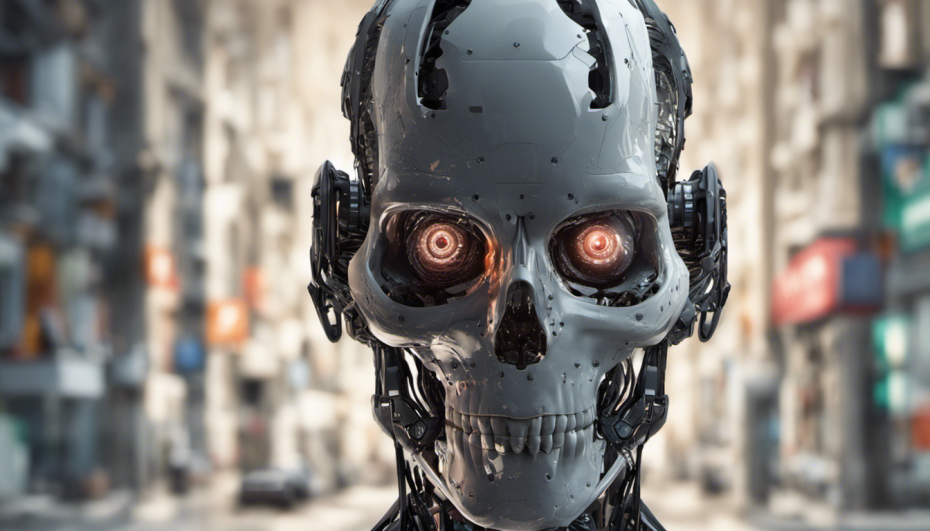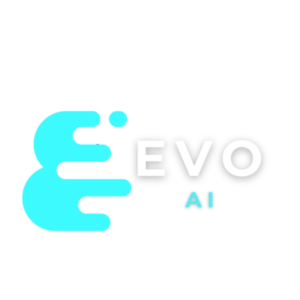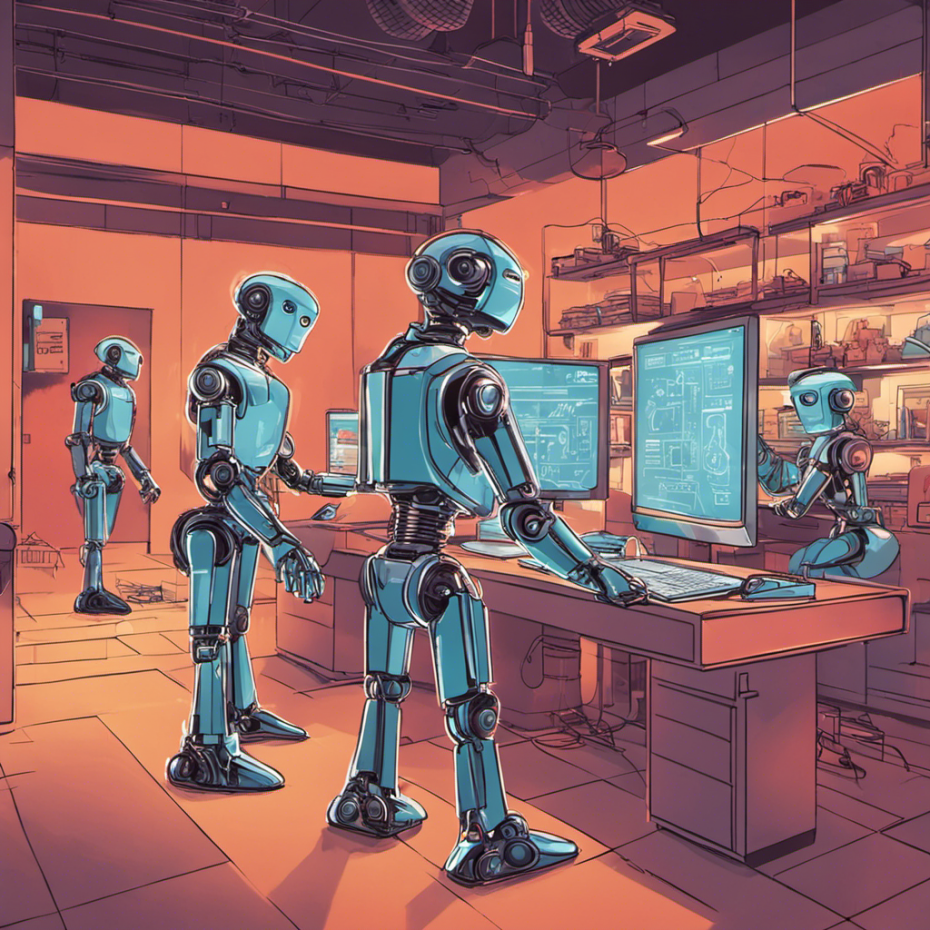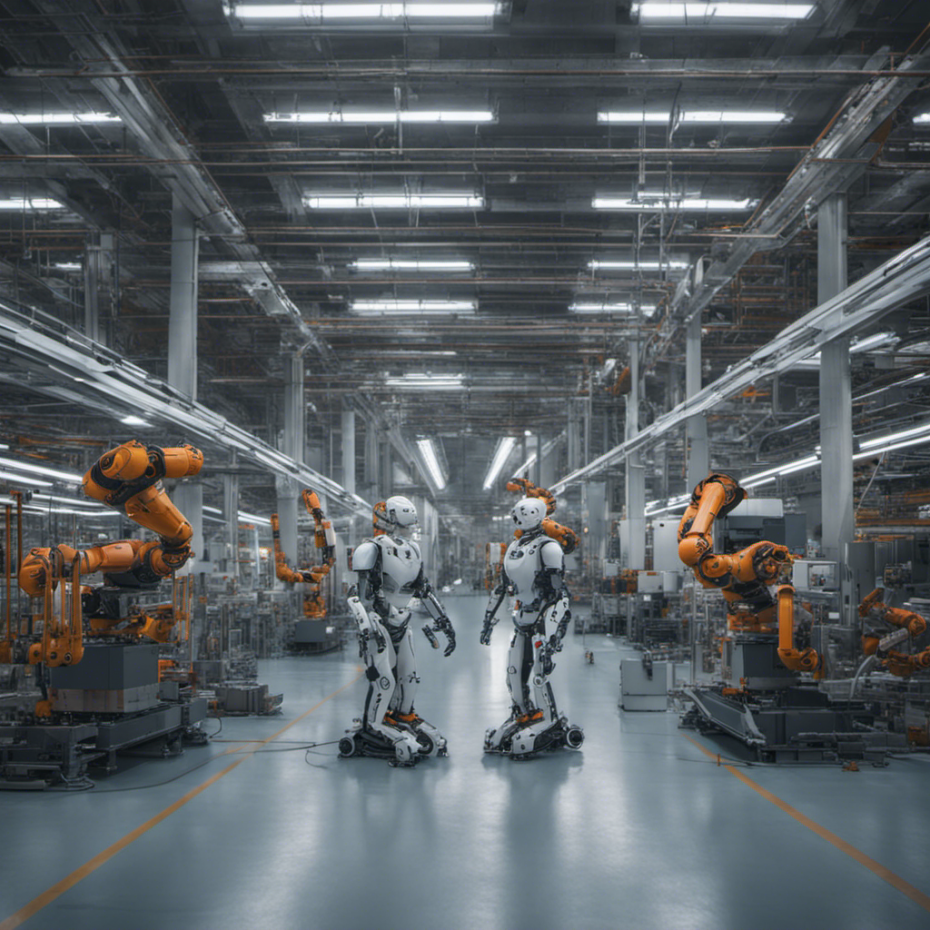
The Current AI Landscape. Looking Ahead. The Prospective Quagmires
In the ever-evolving landscape of technology, it seems we stand at the edge of an amazing yet potentially dangerous frontier — Artificial Intelligence (AI).
In this article, we dissect the underpinnings and potential whirlpools of this technological marvel, steering towards a future where innovation doesn’t spell doom for mankind.
Background
Before we dig deeper, let’s look back at the early stages of AI, a term coined in the mid-1950s, envisioning machines capable of outperforming human intelligence. Fast forward to today, the inroads of AI stretch from complex data analysis to creating realistic deep fake videos or images, effortlessly blurring the lines between reality and fiction.
The Current Landscape
With the marvel of machine learning algorithms — mathematical methods that allow AI systems to learn and evolve by learning — we have automated a substantial slice of data entry and analytics roles. The (still) bustling hubs of accountants will soon be replaced with a silent efficiency that doesn’t demand a coffee break.
As we navigate through the current landscape, we find ourselves surrounded by a technological zeitgeist largely defined by the remarkable feats of Artificial Intelligence (AI). These achievements, although mind-blowing, tread a fine line between innovation and overreach, constantly reshaping our interactions, economies, and even perceptions of reality.
Robotic Process Automation (RPA)
The buzz in the industry today revolves around Robotic Process Automation (RPA), a technology deploying ‘robots’ or ‘bots’ to mimic repetitive tasks previously carried out by humans. This adoption is broad and unforgiving; sectors that heavily relied on data entry roles, including but not limited to banking, accounting, and healthcare, find the human touch steadily fading away, replaced by a ceaseless and tireless digital workforce.
But RPA comes with its labyrinth. While efficiency is augmented, a sizable chunk of the human workforce finds itself steering towards obsolescence, potentially stirring economic disparities and societal rifts. The keystrokes and human buzz that once made offices come to life are gradually lowering in volume, hinting at a silent, yet profound transformation.
Smart Algorithms and Data Analysis
In parallel runs, the ever-evolving field of data analysis is now fine-tuned with smart algorithms capable of dissecting enormous datasets to unveil patterns and insights beyond human comprehension. These algorithms predict market trends, analyse consumer behaviour, and even have a say in the content that appears on our social media feeds, subtly steering societal narratives.
With this comes a responsibility — a responsibility to wield this powerful tool with a conscious hand that ensures ethical deployment. The reality we perceive through the lens of online platforms is becoming a curated gallery, sometimes veering dangerously close to being a hall of mirrors reflecting not the reality, but an algorithmically created illusion. This echo chamber effect has its roots deep in the AI algorithms, and it harbours the risk of narrowing our perspectives, amplifying our beliefs, and sowing discord.
Artificial Creativity
Venturing a step further, we find AI playing with the realms of creativity, traditionally considered a strong 100% human field. Generative algorithms are now creating art, composing music, and even writing scripts. While this heralds an exciting fusion of technology and art, it nudges us to ponder a pertinent question — where do we draw the line to retain our soul in these creations, the very essence that connects us to art on a profound level?
Looking Ahead
As we stand amidst this vibrant yet increasingly unnerving landscape, the role of AI as both a tool and a potential agent of change becomes undeniable. We are forging partnerships with machines, sometimes harmonious, sometimes created with silent undertones of competition.
Navigating this terrain calls for a compass grounded in human values, foresight, and an unyielding commitment to steering the wheel with ethical hands. All the time. While we embrace the convenience and the revolutionary advances AI brings to the table, it remains incumbent upon us to pause, reflect, and sometimes hit the brakes to ensure that in the race for the future, we don’t leave our very essence behind. We don’t forget what makes us human.
The pulse of the current landscape is one of dynamism, fraught equally with amazing opportunities and immense challenges. It offers a tapestry rich with potential, woven with threads of innovation and (should we say?) flashes of genius, albeit requiring a careful and considered approach to avoid unravelling into a dystopian fabric devoid of the vibrant hues of human touch and empathy. It is a journey of collaboration, one where man and machine walk hand in hand, learning from one another, and forging a future that celebrates the best of both worlds.
The Prospective Quagmires
As we delve deeper into the mysterious yet thrilling world of AI, we find ourselves on the precipice of several prospective quagmires that demand our immediate attention and careful navigation. This tech-driven system, if unchecked, can potentially swallow the nuances of human experience and values, leaving us in a mechanized reality lacking depth and understanding. Let’s uncover some of these coming scenarios that stand as challenges in our tech-forward journey.
Autonomous Weapons Systems
First on this list is the burgeoning marvel of Autonomous Weapons Systems (AWS), a creation that marries AI with military might, giving rise to automated agents capable of making life-altering decisions on the battlefield. While this could mean precision and a reduction in human casualties, the moral and ethical dilemmas it poses are manifold. The prospect of machines, devoid of conscience, determining life and death scenarios is indeed a chilling one, perhaps echoing a dystopian narrative that many fear could strip warfare of its humanity, giving rise to cold, calculated, and potentially indiscriminate systems of violence.
Surveillance State
Next in line is the looming shadow of an all-pervasive surveillance state, fostered by AI technologies capable of monitoring every facet of human life. Facial recognition technologies, data mining, and other intrusive AI tools stand with the potential to create a society where privacy is no more than a relic of the past. Under this panopticon, the spontaneity of human life could be traded for a scripted existence, dictated by unseen algorithms steering the choices and freedoms of individuals. Remember 1948? We find ourselves asking: Can freedom thrive in a world where every step is watched, analysed, and guided? Where are all our money, interactions and emotions digitised and bottled up for future analysis?
AI and Deep Fakes
Another terrain of concern is the realm of Deep Fakes, a technology where AI creates hyper-realistic forgeries of video and audio content, allowing for the creation of alternate realities that are nearly indistinguishable from the truth. This technology carries a staggering potential for misinformation, creating environments where trust is a rare commodity, and distinguishing between reality and fabrication becomes increasingly complex, potentially fuelling social unrest and personal tragedies.
The Singularity
A step further down the theoretical road is the frightening concept of singularity — a point where AI surpasses human intelligence, evolving autonomously in ways that we cannot foresee or control.
This runaway train of technological advancement could fundamentally alter the human experience and even pose existential threats. The singularity stands as a warning, urging us to tread the path of innovation with caution, ensuring that we do not unwittingly forge tools of our own undoing.
Conclusion
As we navigate these prospective quagmires, it is incumbent upon us to steer the ship of innovation with a hand that is both firm and judicious. We are called upon to forge paths that balance the breathtaking potential of AI with the preservation of the core values that define us as human beings.
To foster a future rich in innovation yet rooted in humanity, a collaborative global effort is required — one that brings together the brightest minds from the worlds of technology, ethics, and governance to construct a roadmap that stands on a foundation of moral fortitude, ensuring that as we step into the brave new world of AI, we do so with a spirit of stewardship that honours both the advancements of technology and the intrinsic value of human life and dignity. The prospective quagmires urge us to proceed with caution, wisdom, and heart, crafting a future that is both advanced and deeply humane.
Steering Away from the Brink
As we ponder the prospective quagmires in AI’s evolution, the imperative question arises: How do we steer away from the brink, of navigating a safe passage through the exciting yet potentially perilous sea of technological advancements? Below we explore the avenues and safeguards that can act as our guiding stars in this endeavor.
Ethical Groundings
The cornerstone of this safe navigation must be a robust foundation in ethics. Crafting AI systems grounded in moral principles should be non-negotiable. This involves fostering AI literacy, where developers and users alike are enlightened on the ethical ramifications of AI technology, thereby encouraging a culture of responsibility and foresight.
Regulatory Frameworks
Just as a plane requires a competent captain to steer it safely, the world of AI demands stringent regulatory frameworks to guide its path. These frameworks should emphasize transparency and accountability, ensuring that AI technologies uphold human rights and democratic values. From a governance perspective, this calls for the creation of multi-stakeholder forums, bringing together governments, civil society, and industry experts to collaboratively chart a course that avoids the iceberg of unbridled AI development.
Educational Adaptation
In the face of a rapidly changing job landscape, our educational institutions must evolve to foster a workforce adept at working alongside AI. This involves nurturing skills that are distinctly human, such as critical thinking, emotional intelligence, and creativity, thereby carving out a space for mankind in an AI-augmented future. It is about fostering a symbiotic relationship where man and machine can coexist, complementing each other’s strengths and mitigating weaknesses.
Public Engagement
To navigate these waters successfully, it is crucial to include the broader society in the discourse surrounding AI. This involves fostering platforms for public engagement, where individuals can voice their concerns, ask questions, and contribute to the shaping of AI policies. It’s about crafting a future where technology is democratized, and the common man has a say in its trajectory, fostering a society where AI is viewed as a collaborative partner rather than a dominant force.
International Collaboration
Lastly, in the globally interconnected world that we inhabit, steering away from the brink demands international collaboration. Countries must come together to create a harmonized approach to AI development, sharing knowledge and best practices to foster a landscape of AI that is globally coherent and mutually beneficial, mitigating risks and ensuring that advancements do not come at the cost of human welfare and global stability.
Conclusion
As we forge ahead in the dynamic landscape of AI, the task at hand is both monumentally important and urgent. It calls for a global community moving in tandem, with a vision grounded in the principles of ethical development, respect for human rights, and a commitment to safeguarding our collective future.
To steer away from the brink is to embrace the wisdom of prudence, foster development that is anchored in the bedrock of ethical principles and carve out a path that respects the spirit of human ingenuity while safeguarding in perpetuity the sanctity of human life and dignity.
As we venture forth, let us do so with a spirit of optimism, armed with the tools of wisdom, foresight, and collaboration, nurturing a landscape of AI that is not only advanced but also safe, respectful, and profoundly human, honouring the rich tapestry of our shared human experience in a landscape filled with advanced technological wonders. It is a call to move into the future with open eyes, courage and steadfast hearts, crafting a narrative of AI that stands as a beacon of hope, innovation, and shared prosperity for everyone.
About The Author

Bogdan Iancu
Bogdan Iancu is a seasoned entrepreneur and strategic leader with over 25 years of experience in diverse industrial and commercial fields. His passion for AI, Machine Learning, and Generative AI is underpinned by a deep understanding of advanced calculus, enabling him to leverage these technologies to drive innovation and growth. As a Non-Executive Director, Bogdan brings a wealth of experience and a unique perspective to the boardroom, contributing to robust strategic decisions. With a proven track record of assisting clients worldwide, Bogdan is committed to harnessing the power of AI to transform businesses and create sustainable growth in the digital age.





Leave A Comment